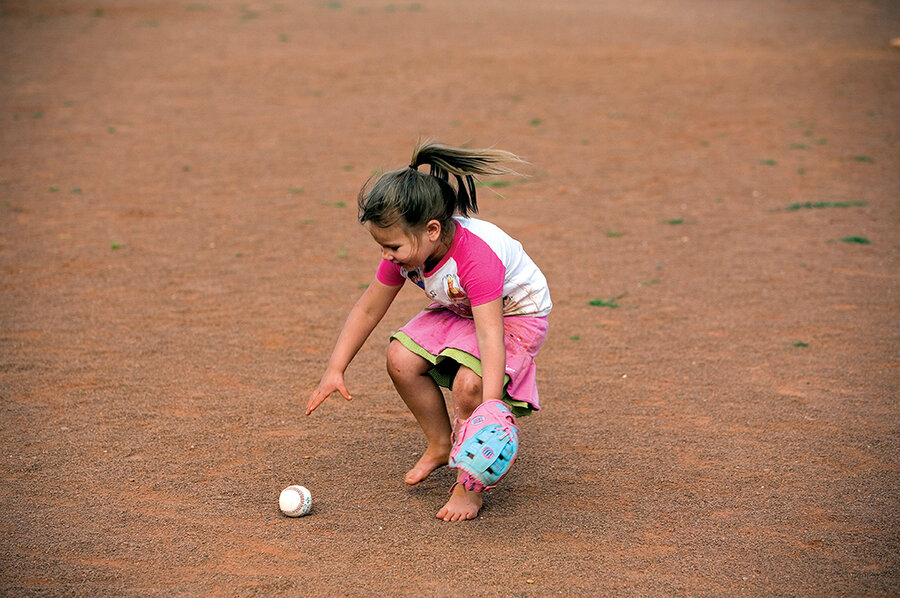Little big league
Loading...
Our local park showcases the best baseball talent this side of first grade. And I’m its newest fan.
I’ve been skeptical of efforts to rope tiny kids into team sports. There’s fresh air and a dab of movement involved, so that’s good, but the attempt to introduce game structure into young kids’ minds is like trying to braid a pitchfork. Personally, I think they’d be better off with duck, duck, goose for another year or so.
But the “Pre-Wee League” won me over. Everyone has a good time, and nobody is yelling. It all has to do with the rules: There aren’t any.
Oh, there sort of are, but they’re more like suggestions. It’s hard to go wrong.
Each child has five pitches to saw at, or eight or nine if the situation calls for it. Then the batting tee comes out, and the child can whack at it until the ball rolls off. Each team’s adult coach is the pitcher, tasked with trying to get the ball to make contact with the erratically swinging bat. So everybody hits or in some other way encourages the ball in a forward direction, and everyone runs the bases. There are three innings. An inning is over when everyone’s had a turn at bat. No runs are scored. Nobody wins or loses.
“Does that bother them?” I asked. Not yet, I’m told.
In theory, runners can be declared “out” if by some coincidence a ball is chased down at a base before they manage to get themselves out of first gear and headed in the right direction. In that case, it is suggested to the runner that he or she might want to go back to the bench, but those who get too involved with the second baseman’s bug collection can stay put and the other runners work around them.
Today, the Georgia-Pacific Girl Power team is facing the Barbers, an all-boys team. The Girl Power players are wearing pink, and the Barbers are in blue.
The Barbers, all five of them, trot out to their designated positions. The second baseman picks through the grass for bugs, the third baseman consults a passing cloud, the pitcher (who does not pitch) crouches in total safety behind the coach. The shortstop experiments with alternative hat and mitt placements, and the highly alert first baseman hops up and down. The leadoff hitter in the pink lineup steps up to the vicinity of the plate. Pitching commences: Swing, and a miss. Swing, and a miss.
Miss, and a swing.
The batter is all limbered up for the tee now, and within three whacks has dislodged the ball in the direction of third base, which is so astonishing that everyone pauses to admire it, except the highly alert first baseman, who cannot contain himself from charging all the way to third for the ball before spinning around in confusion as he attempts to field it to himself on first.
Second batter for pink is tiny. Her chin comes into view under her enormous helmet as she tips her head back to locate home plate, where she squares up like a sentient mushroom. At the first pitch, Tiny trickles the ball into the infield and heads off toward first base at a dead totter with both hands on her helmet, finally going the distance as more and more of the base path comes into view beneath the brim.
She continues around the base path behind the first runner and both of them fetch up at the same time on home plate in time to watch the ball’s triumphant arrival at first base.
A half-hour later, pink takes the field with a minimum of one player per position, including the outfield where, defensively speaking, their presence is strictly ornamental.
They even have enough players to field a catcher, who is armored up with enough safety equipment to tip her over well behind home plate, from which position she assembles a ball collection. An adult wings them back to the pitcher.
It’s a terrific game. Everyone has a good time. The team cheers at the game’s conclusion are a triumph of coordination. Both sides nail them.





